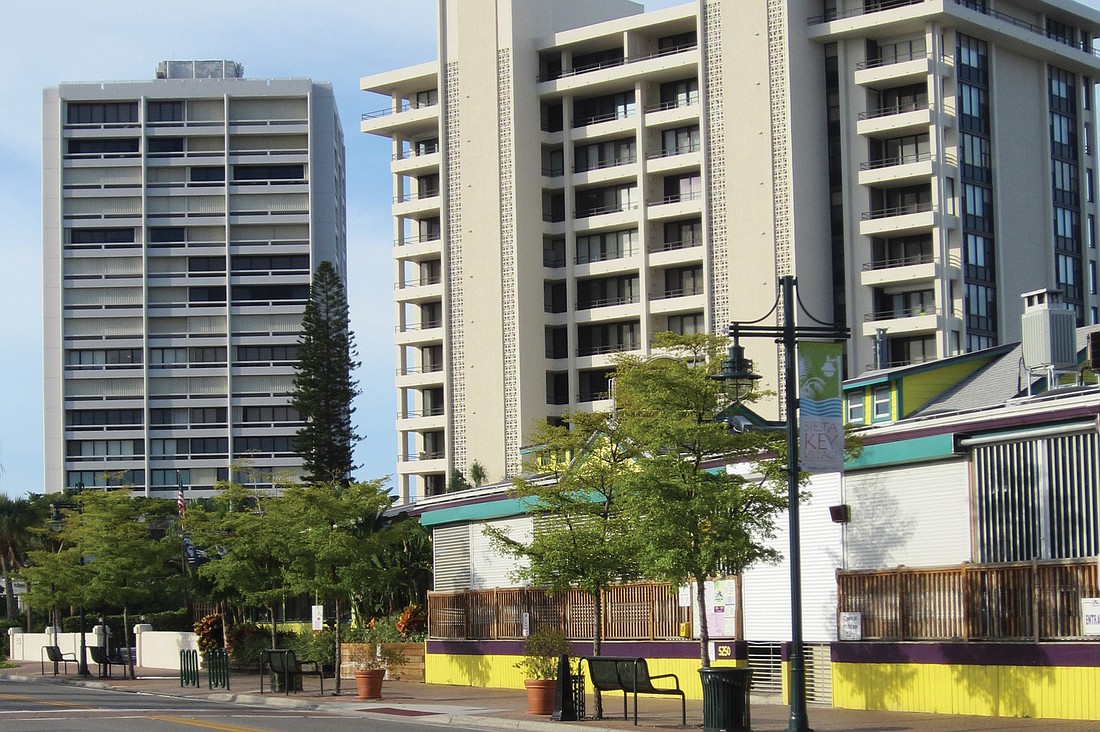- November 1, 2024
-
-
Loading

Loading

Beginning Nov. 15, the Sarasota County Commission will start discussing the reversal of an Oct. 12 vote that has alarmed Key residents.
Although commissioners say they thought they were voting on a zoning matter that affected Nokomis only, they learned later their approval of a change to the ordinance governing any critical area plan affected every part of Sarasota County, including the barrier islands. That change would allow owners of commercial, office, industrial and residential multi-family parcels to ignore maximum building heights that were established in 2003.
“The No. 1 concern is that CAP plans really shouldn’t apply to the barrier islands,” Commission Chairwoman Nora Patterson said. “If there’s ever an area where you should be pretty strict, (it is one such as Siesta Key).
“I can tell you the County Commission was not aware (the Oct. 12 amendment) was as sweeping as it was,” Patterson said. “I can guarantee you that the public was not aware (either).”
Lourdes Ramirez, past longtime president of the Siesta Key Association, brought up the Oct. 12 vote during the Siesta Village Association meeting last week.
“A lot of people were concerned about it,” she said. “A lot of people don’t want to see the entire coastline with these tall buildings. We’re such a great community. I think people love the way it looks.”
Ramirez provided background on the County Commission’s Oct. 12 action in her Siesta Key Community blog, a regular update on Key news she began shortly after she stepped down from the SKA board in March. A CAP is a tool used in developing a strategy for how property should be developed, she pointed out. It can be applied to areas that need additional guidelines, as in the Nokomis case.
In light of recent changes to the county’s Comprehensive Plan, according to a memo to the commission dated Oct. 12 from county Executive Director Rob Lewis, the commission asked staff to draft proposed amendments to the zoning ordinance relating to increased densities allowed through critical area plans.
The ordinance already stipulated that “to preserve the scenic character of the Intracoastal Waterway and the bays, and ensure appropriate massing of buildings along these waterfront areas,” certain restrictions applied. Among them was the restriction that no structure on the waterways could exceed 85 feet in height above the Federal Emergency Management Agency-mandated minimum height in a flood zone; it also would have to be at least 250 feet from the waterway.
FEMA requires new construction seaward of the state’s Coastal Construction Control line on the barrier islands to be at least 19.4 feet, to the first habitable floor, Laird S. Wreford, the county’s coastal resources manager, said.
The ordinance also stipulated that structures closest to the waterways could not be taller than 35 or 45 feet above the FEMA minimum, depending on the zoning district in which they were located.
The ordinance changes the County Commission approved Oct. 12 included the tables for maximum heights and setbacks that the county had been using. However, the amendment included the proviso, “An adopted Critical Area Plan may establish a maximum height above that indicated in this table, for mixed-use developments as defined in that plan.”
“So I want that (CAP language) removed, just to honor the fact that so many people participated in that conversation,” Patterson said.
The Sarasota County Council of Neighborhood Associations worked with other groups to make sure the County Commission in 2003 included height stipulations in the zoning code, Ramirez pointed out in her blog.
Siesta residents first voiced concerns about the need for height restrictions after a high-rise building at The Oaks was completed on the Gulf of Mexico, Patterson said, as that condominium complex suddenly interrupted the water view some Siesta homeowners had enjoyed.
Even after reverting to the original protections for the barrier islands, Patterson said, the County Commission still could grant special exceptions allowing developers to circumvent the height standards, but the vote would require a supermajority of the commission, four out of five votes.
“That (supermajority option), too, was very, very heavily debated (before the County Commission approved it in 2004),” Patterson said.
Referring to the Nov. 15 meeting, Patterson said she was unsure whether the necessary language is already going to be written for referral to the Planning Commission. Nevertheless, she said, the discussion will focus on what commissioners want to see happen to remedy that Oct. 12 vote.
Either way, Patterson said people should not expect to see skyscrapers in the future on the barrier islands.
Three steps to undo a vote
Sarasota County Commission Chairwoman Nora Patterson expects first the Planning Commission, then the County Commission, will address three measures to remedy an Oct. 12 County Commission vote that opened the door to skyscrapers on barrier islands in the county.
First, she said, a revised county ordinance would stipulate that critical area plans, used in planned development, no longer apply to barrier islands, as they previously did not.
Second, the ordinance would stipulate that height restrictions be put back into effect for the barrier islands.
Third, any County Commission approval of a CAP would necessitate a supermajority vote: four out of five commissioners would have to approve it.